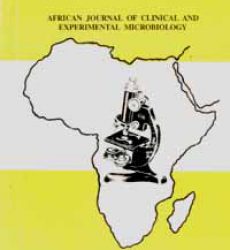1Ajang, A. Y., 1Ella, E. E., 1Oguntayo, A. O., 2Innocent, E., and 1Aminu, M.
1Department of Microbiology, Faculty of Life Sciences, Ahmadu Bello University, Zaria, Nigeria
1Department of Oncology, Ahmadu Bello University Teaching Hospital, Zaria, Nigeria
2Department of Histopathology, Jos University Teaching Hospital, Jos, Nigeria
*Correspondence to: yakubuabubakar92@yahoo.com
Abstract:
Background: Human papillomavirus (HPV) is a well-established causal agent of cervical cancer, and the first group of viruses to have been acknowledged to prompt carcinogenesis. They are linked with cancers of the uterine cervix, anogenital tumours, and head and neck malignancies. Cervical cancer is by far the most common HPV-related disease, with about 99% of cervical cancer cases caused by persistent genital high-risk (HR) HPVs, especially types 16 and 18. Continue reading “Prevalence of high-risk HPV types 16 and 18 in relation to immune status and cervical cytological profile of HIV-infected women on antiretroviral therapy in northcentral Nigeria”

